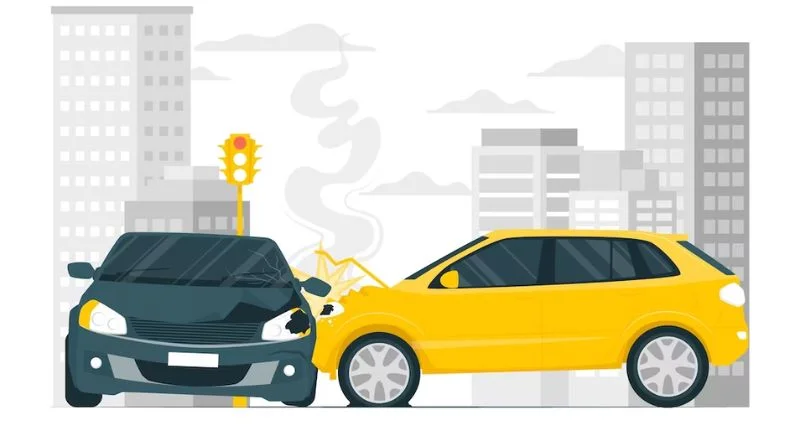Car Accident Statistics That Will Surprise You
Car accidents are an unfortunate reality of modern life. While many of us get behind the wheel assuming we’re safe, we often don’t consider the vast array of factors that contribute to the thousands of accidents that occur daily.
The world of car accident statistics is vast, and it paints a picture far more complex than most would imagine. From the roles of weather, technology, and even specific days of the week, the data can be both startling and enlightening.
Global Overview
Across the globe, car accidents remain a significant concern, irrespective of the advancements in road safety and vehicle technology. Each year, approximately 1.35 million people lose their lives due to road traffic crashes, according to the World Health Organization.
Some countries, surprisingly, have higher accident rates not because of chaotic traffic, but due to factors like poor road infrastructure or lax enforcement of driving laws. On the flip side, nations like Sweden and Japan have managed to dramatically reduce their accident rates, thanks to innovative road safety strategies and rigorous driver training programs.
Equally alarming is the fact that certain roads and intersections, often in unexpected locales, consistently rank as the most dangerous worldwide. Understanding these global patterns is essential for identifying solutions and preventive measures.
U.S. Specific Statistics
Navigating the vast road networks of the United States, drivers encounter a myriad of challenges. Annually, the U.S. witnesses approximately 6 million car accidents, resulting in around 36,000 fatalities, according to the National Highway Traffic Safety Administration.
To zoom in on a more localized level, let’s consider car accident statistics in Albuquerque. This southwestern city, with its unique topography and mix of urban and rural roadways, has seen an increase in road accidents over the past year.
Delving deeper into the causes, distractions, especially from mobile devices, lead the charge, followed closely by impaired driving and speeding. Surprisingly, states with sprawling urban centers, like California and Texas, don’t always top the list for highest accident rates — sometimes, it’s the less populous states with challenging terrains or weather conditions that see a spike.
Surprising Factors Contributing to Accidents
When we think about car accidents, it’s often speeding or drunk driving that comes to mind. However, there’s a plethora of other unexpected culprits that contribute significantly to on-road mishaps.
Modern technology, while providing numerous conveniences, has introduced new distractions. Infotainment systems, GPS devices, and even smartwatches can divert attention just long enough to cause a catastrophe. While snow and rain are acknowledged hazards, many drivers are unaware of the dangers of sun glare during sunrise and sunset, leading to vision impairment on the road.
Interestingly, certain vehicle types, such as large SUVs, are more likely to roll over in an accident despite perceptions of them being safer. Unraveling these less-discussed factors is crucial in bolstering our defense against potential road dangers.
Age and Gender Analysis
It’s a long-standing debate: who are safer drivers, the young or the elderly? Men or women? The statistics present some intriguing insights.
Young drivers, especially those aged 16-24, tend to be more involved in accidents, primarily due to inexperience and risk-taking behaviors.
However, elderly drivers (over 70) have their own set of challenges, such as reduced reaction times and visual impairments, leading to their involvement in a higher proportion of accidents per miles driven.
Gender-based analyses have their own set of surprises. While men are generally more likely to engage in risky behaviors like speeding or driving under the influence, they are also more often involved in severe crashes.
Women, on the other hand, are statistically more likely to be involved in minor fender benders. However, it’s essential to move beyond stereotypes; understanding the nuances of these statistics can help target safety campaigns more effectively and pave the way for safer roads for everyone.
Time and Day Analysis
Have you ever wondered if there’s a “safest” time to drive or a particular day you might want to be extra cautious? The numbers offer some illuminating insights.
Statistically, nighttime driving, especially between midnight and 3 a.m., poses the highest risk. Limited visibility, fatigue, and a higher probability of impaired drivers contribute to this elevated danger.
Weekends, especially Saturday nights, see a spike in accident rates, likely due to increased leisure activities and, unfortunately, more instances of drunk driving. Contrarily, mid-week mornings, between 10 a.m. and 12 p.m., tend to be the safest, as rush hour traffic subsides and there’s still ample daylight.
Holidays present their own challenges. Days like the Fourth of July and New Year’s Eve, known for celebrations, often see a sharp rise in accident rates. Awareness of these patterns can inform drivers to exercise extra caution during these higher-risk periods.
Advances in Car Safety and Their Effect
In the face of such concerning accident statistics, there is a silver lining. Technological advancements and innovations in car safety have played a monumental role in reducing accidents and saving lives.
Here are some surprising figures and facts:
- Airbags & Seat Belts: Since their widespread adoption, frontal airbags have saved over 50,000 lives in the U.S. alone. Meanwhile, seat belts reduce the risk of death for front-seat passengers by nearly 45%.
- Electronic Stability Control (ESC): This often-overlooked feature, which prevents vehicles from skidding in slippery conditions, has been found to reduce single-vehicle crash risk by 34% and the risk of fatal single-vehicle crashes by 56%.
- Autonomous Emergency Braking (AEB): Vehicles equipped with AEB have 50% fewer rear-end crashes compared to vehicles without this technology.
- Backup Cameras & Sensors: Since their introduction and eventual mandate in new vehicles, backup cameras have led to a 17% decline in accidents caused due to the vehicle moving in reverse.
- Autonomous Vehicles: While still in their infancy, self-driving cars hold promise. Preliminary studies suggest they could reduce accidents by up to 90%, given that 94% of accidents are attributed to human error.
- Safety Campaigns & Driver Education: Awareness campaigns like “Click It or Ticket” and comprehensive driver’s education courses have seen a measurable impact, leading to more informed and safer drivers.
Conclusion
Navigating the maze of car accident statistics reveals a blend of alarming truths and promising advancements. While the numbers underscore the very real dangers on the road, they also highlight the incredible strides in technology and awareness campaigns aimed at safeguarding lives.
As drivers, it’s our collective responsibility to stay informed, make prudent choices, and embrace the tools at our disposal. By doing so, we not only protect ourselves but contribute to a safer and more responsible driving culture for everyone.




